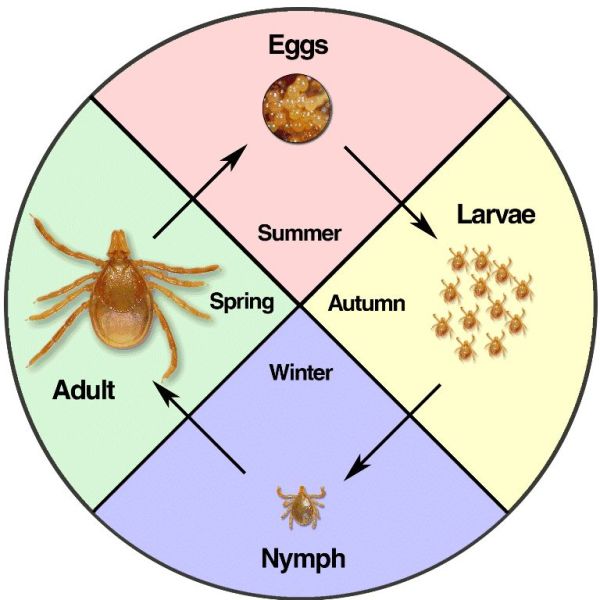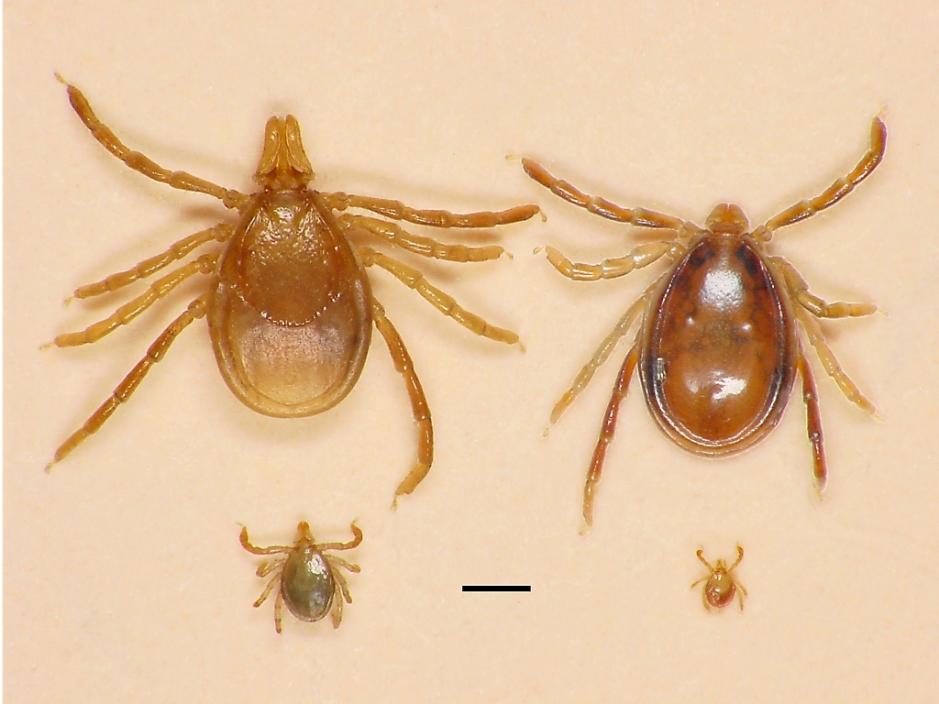December 8 - 14, 2013: Issue 140
TICKS
We know that ticks inhabit the Pittwater area and that they can cause problems for humans and animals. There is now another way for you to find out more about managing the risk, avoiding problems and dealing with those that arise, especially as they affect humans.
We can start with the Fact Sheet that appears below. It has been prepared by doctors, entomologists and a veterinary surgeon. It is a brief, accurate and reliable introduction.
As you read the Fact Sheet, remember the following further facts:
- ticks like moist conditions and do not like dry areas;
- ticks do not jump up from below or drop down from high trees – they “quest” by climbing no more than about 1.5 metres on vegetation (they dry out if they go too high) and sit, waving their front legs to latch onto passers-by;
- as they climb your body, they will stop at tight clothing – hence concentrations of bites occur along underwear lines, etc; if they do not meet any insecticide or tight barrier, they may climb to the neck and head;
- it is best to kill them on the body and let them drop off or later brush them off; it is not helpful for non-experts to pull them off/out, because the trauma may cause more of their saliva to enter the bite and add to the health problems;
- ticks can be killed by spraying them with a spray that contains ether, which freezes the tick immediately (eg. WART OFF or Wartner); ether is also an ingredient of Aerostart, the spray that displaces water and enables wet engines to start – but it is not an approved medical substance; for larval/nymph stage ticks you can apply Lyclear on the tick (an over-the-counter cream available from pharmacies);
- DEET is in products such as RID, Tropical RID, Tropical Aerogard or Bushmans;
- Picaridin is in products such as OFF.
“Anaphylaxis” is a severe allergic reaction that may have potentially life threatening symptoms, such as:
difficult/noisy breathing
swelling of tongue
swelling/tightness in throat
difficulty talking and/or hoarse voice
wheeze or persistent cough
loss of consciousness and/or collapse
pale and floppy (in young children)
In some cases it may be preceded by less dangerous symptoms, such as:
swelling of face, lips and eyes
hives or welts on the skin
stomach pain, vomiting.
We know that a number of Pittwater residents have the red meat (or, more accurately, mammalian meat) allergy caused by ticks – gut reactions and sometimes anaphylaxis from eating the meat of any mammal (any four-legged animal – and whales!). Some people also develop an allergy and react to other mammalian products – gelatin, milk, cream, soft cheeses, etc.
These problems are not confined to Pittwater – this is an issue along the entire east coast of Australia and has been identified in Europe and the USA. (And no, this has nothing to do with Lyme disease.) About two new people with tick-induced red/mammalian meat allergy present at Royal North Shore Hospital every week and there are over 450 sufferers already known to RNSH – and over 300 more elsewhere in northern Sydney. Many more people suffer tick anaphylaxis (severe reaction to the bite) without the meat allergy, especially in the tick season from August to March.
To address these matters a committee has been formed at Royal North Shore Hospital, convened by Associate Professor Sheryl van Nunen, Department of Clinical Immunology and Allergy. It is called the Tick-induced Allergies Research and Awareness Committee (TiARA). Its website contains much useful information, including a two-part PowerPoint presentation that fully explains the situation for anyone interested: www.tiara.org.au
Nicholas Cowdery
Co-Chair, TiARA Committee

__________________
Fact Sheet: Tick Avoidance and Management
Ticks May Make You Sick!
Most tick bites are harmless, however Ixodes holocyclus (commonly known as the “Paralysis tick”) may make you sick in several ways:
A range of minor to major allergic reactions, even anaphylaxis.
The development of allergy to red meat, often anaphylaxis.
The transmission of specific diseases.
Rare life threatening paralysis.
Paralysis Tick Biology
There are four stages; the egg, larvae (0.5mm), nymph (1.5mm) and adult (3.5mm).
Tick stages are seasonal, with larvae active during the autumn, nymphs in winter, and adults in the spring.
The adult stage is the most dangerous, but any stage can lead to allergic reactions.
When Going Into the Aussie Bush
Try to avoid peak ‘ticky’ times, especially after wet periods.
Wear light coloured clothing to help spot ticks, and check yourself regularly.
Tuck pants into socks, and shirts into pants.
Apply repellents to the skin. Use those that contain DEET or Picaridin, and apply (and reapply) as per label directions.
Soak clothing in permethrin washes (available from outdoor stores). Follow label instructions for application and re-application.
After being in a ‘ticky’ area, remove clothing and place into a hot dryer for 20 minutes to kill any ticks that may still be present.
Avoiding Ticks Around the Home
Install animal proof fencing. This prevents the host animals coming into your yard where they can drop ticks.
If there are tick prone areas around the home, install fencing to prevent children from entering those area.
Ticks do not like dry conditions! Keep overhanging foliage and leaf litter to a minimum, and mow lawns regularly.
Apply insecticides to areas where ticks occur, you may need the service of a professional pest controller. Ensure that ticks are on the insecticide label.
Regularly treat pets to prevent ticks; many dogs and cats die every year from tick paralysis.
More Information?
www.tiara.org.au (Tick induced mammalian meat allergy & tick allergy)
www.medent.usyd.edu.au (Tick fact sheets)
www.allergy.org.au
www.allergyfacts.org.au
Illustrations courtesy of Stephen Doggett, Senior Hospital Scientist, Department of Medical Entomology, Pathology West, ICPMR, Westmead Hospital

Ticks - final stages. The female (biting) adult tick is the one with the prominent front mouth area. The other, the male, is not a problem – they feed on female ticks.